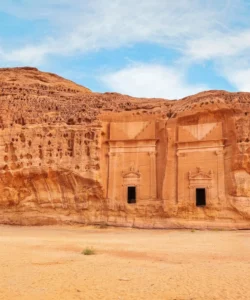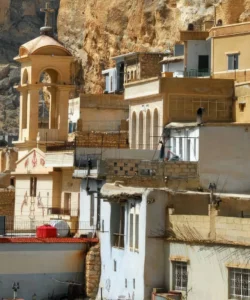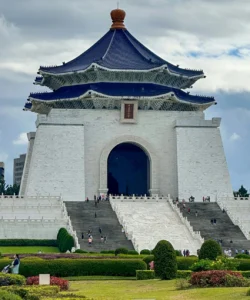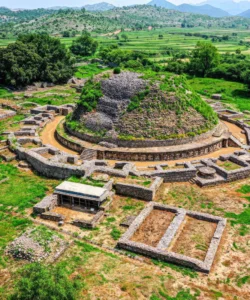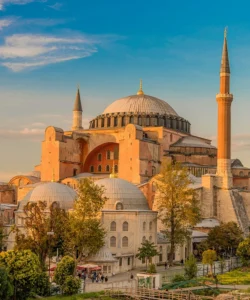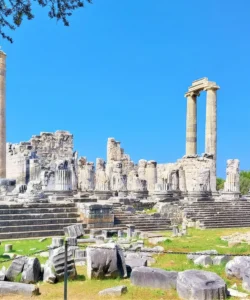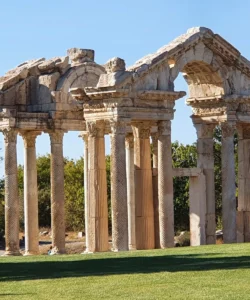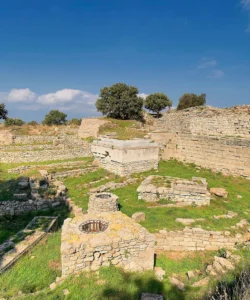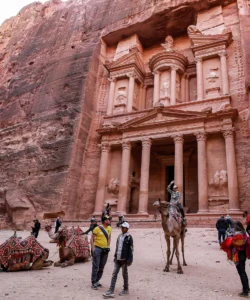Hagia Sophia, officially the Hagia Sophia Grand Mosque, is an architectural masterpiece in Istanbul, Turkey. It is a building of immense historical and cultural significance, having served as a Byzantine cathedral, an Ottoman mosque, a secular museum, and now once again as a mosque. Its innovative architecture and layered history make it a symbol of the city’s unique role as a bridge between East and West.
Listen to an introduction about Hagia Sophia
Name
Hagia Sophia (Greek: Ἁγία Σοφία, meaning “Holy Wisdom”; Turkish: Ayasofya).
Address
The Hagia Sophia is located in the Sultanahmet district of Istanbul, Turkey. It is a central landmark in the city’s Old City and is situated directly across from the Blue Mosque.
How to Get There
Hagia Sophia is a central tourist hub and is easily accessible via Istanbul’s public transport network.
- By Tram: The most convenient way to get there is by taking the T1 tram line to the Sultanahmet stop. From there, it is a short, 7-minute walk to the mosque.
- By Metro: You can take the M2 metro line to the Vezneciler station, which is about a 30-minute walk from the mosque.
- On Foot: The mosque is located within walking distance of many of Istanbul’s other major historical sites, including Topkapi Palace and the Grand Bazaar.
Landscape and Architecture
Hagia Sophia’s architecture is renowned for its innovative design and its powerful blend of Byzantine and Ottoman styles.
- The Dome: The most famous feature is its massive central dome, which has a diameter of 31 meters (102 feet). An engineering marvel for its time, the dome appears to float above the main hall, as its weight is ingeniously distributed by a series of pendentives and semi-domes.
- Byzantine and Ottoman Fusion: The original structure, built as a cathedral in the 6th century, is an epitome of Byzantine architecture. After its conversion into a mosque in 1453, the Ottomans added four minarets, a mihrab, a minbar, and giant calligraphic medallions, blending the two architectural traditions into a harmonious whole.
- Mosaics and Calligraphy: The interior is a breathtaking space where Christian mosaics and frescoes coexist with Islamic calligraphy. While many mosaics were covered during its time as a mosque, some have been restored and remain visible, telling the story of its religious transitions.
- Interior Space: The interior is vast and open, with walls lined with polished marble and ornate columns. Its spaciousness and the ethereal quality of the light filtering through its numerous windows were designed to create a sense of divine majesty.
What Makes It Famous
Hagia Sophia’s fame is a combination of its architectural brilliance, its shifting identity, and its role as a historical symbol.
- “Holy Wisdom”: Hagia Sophia served as the largest cathedral in the world for nearly a thousand years and was the central religious hub of the Byzantine Empire.
- Architectural Innovation: The construction of its immense dome was a revolutionary feat of engineering that “changed the history of architecture” and became a model for later Ottoman mosques.
- Symbol of Istanbul: The building’s transitions from cathedral to mosque, to museum, and back to mosque, mirror the history of Istanbul itself, a city at the crossroads of empires and religions.
- UNESCO World Heritage Site: The Hagia Sophia is a key component of the Historic Areas of Istanbul, a UNESCO World Heritage Site.
Differences from Some Other Wonders (e.g., The Umayyad Mosque)
While both Hagia Sophia and the Umayyad Mosque are iconic religious buildings with a shared history of cultural influence, they have distinct origins and architectural styles.
- Original Purpose: Hagia Sophia was built as a Christian cathedral and later converted into a mosque. The Umayyad Mosque was built from the ground up as a mosque, albeit on a sacred site.
- Architectural Layout: Hagia Sophia is a domed basilica with a vast central nave. Its design became the model for many later Byzantine and Ottoman mosques. The Umayyad Mosque, with its large courtyard and three-aisled prayer hall, became the prototype for the “hypostyle” mosque plan, a very different style.
- Timeline of Influence: The Umayyad Mosque represents the earliest monumental architecture of the Islamic world (8th century). Hagia Sophia is an older building (6th century) that served as an architectural inspiration for centuries, including for the Ottomans who conquered it.
Hagia Sophia Photos:














